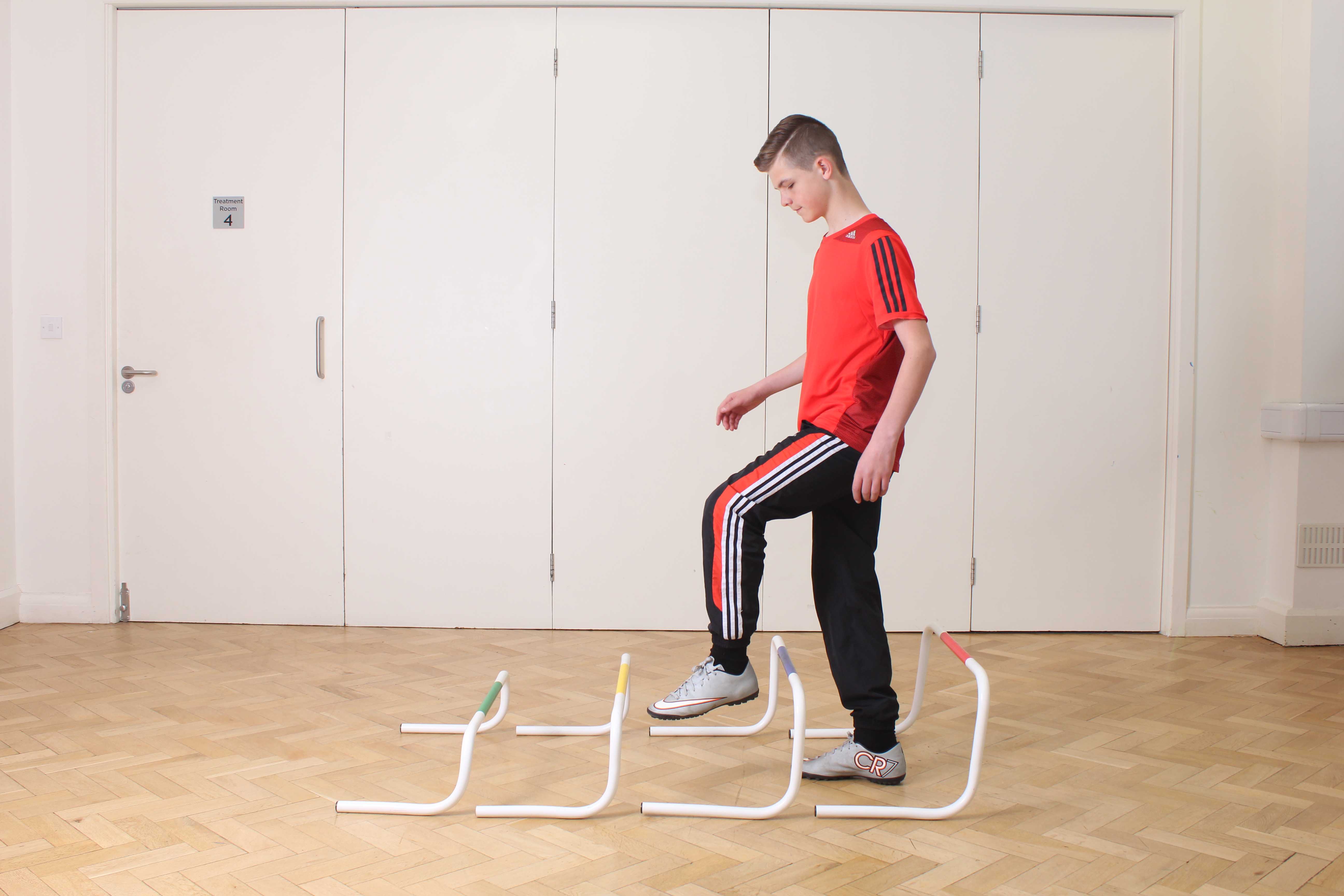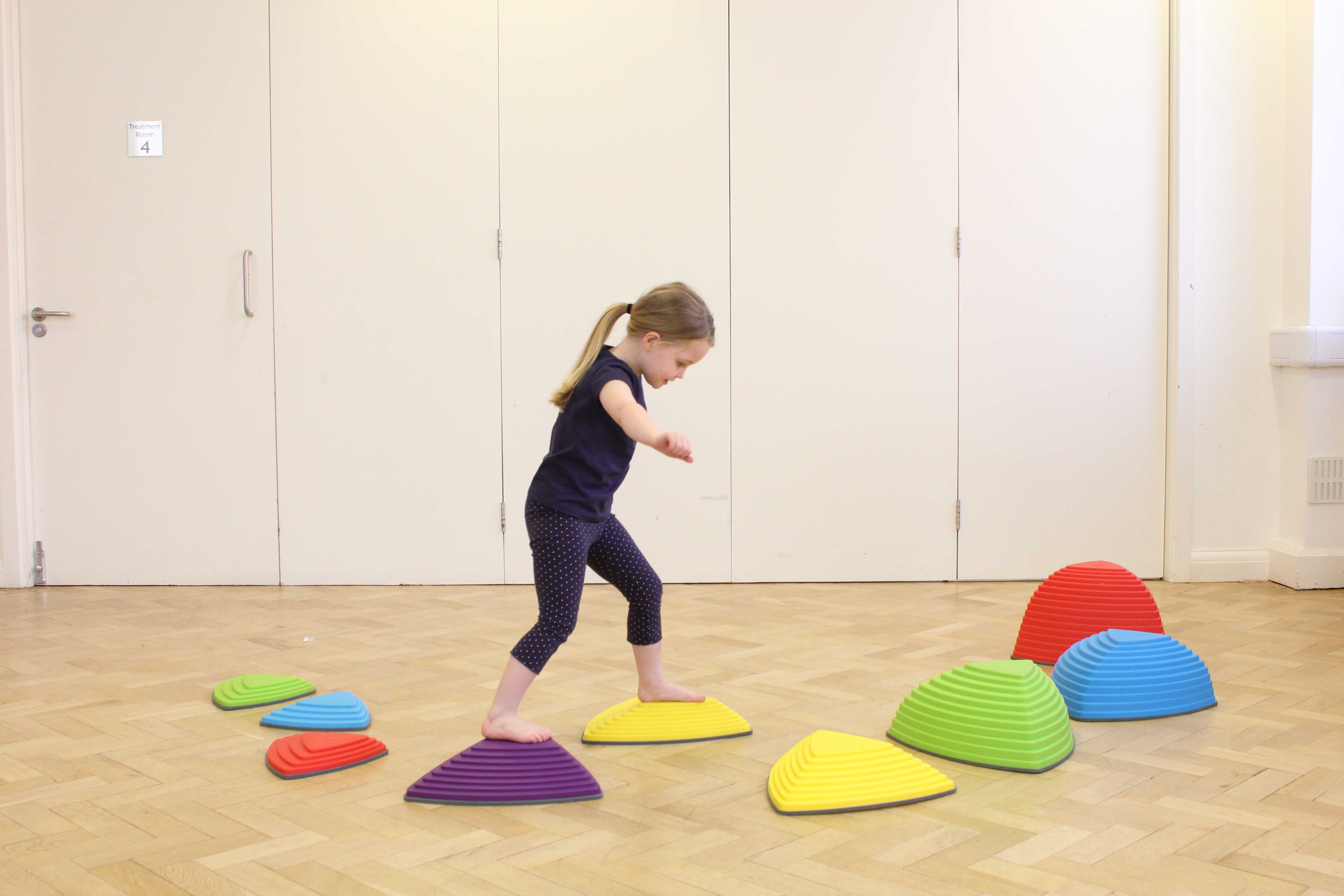What is an anterior iliac spine avulsion?
An avulsion fracture is an injury to the bone in a place where a tendon or ligament attaches to the bone. In the anterior iliac spine which is part of the pelvis the common sites of avulsion fractures are at the attachment of:
- Sartorius muscle to the anterior superior iliac spine
- Rectus femoris to the anterior inferior iliac spine
 Above: Balance and co-ordination exercises supervised by a paediatric physiotherapist
Above: Balance and co-ordination exercises supervised by a paediatric physiotherapistWhat causes an anterior iliac spine avulsion?
An anterior iliac spine avulsion is caused by sudden and forceful contraction of the sartorius and rectus femoris while the subject is engaged in a sporting event such as kicking a ball, running or jumping. Forceful extension at the hip can also lead to an avulsion injury.
Diagnosis of an anterior iliac spine avulsion
Diagnosis of an anterior iliac spine avulsion can be made following a detailed patient history, physical examination and x-ray.
 Above: Strengthening and mobilisations exercises for the hip and knee
Above: Strengthening and mobilisations exercises for the hip and kneeWhat are the symptoms of an anterior iliac spine avulsion
- Pain in the pelvic region
- Swelling
- Difficulty walking
- Pain on passive movement of the hip
Physiotherapy for an anterior iliac spine avulsion
An anterior iliac spine avulsion is commonly treated conservatively. Physiotherapy treatment should be commenced as soon as possible following your childs injury for the best possible recovery.
At Physio.co.uk our paediatric physiotherapists will improve your childs confidence and gradually improve their mobility following an avulsion fracture. Our paediatric physiotherapists are experienced at assessing and treating avulsion fractures in children and young adults. Physiotherapy treatment at Physio.co.uk will:
- Reduce pain and swelling
- Restore full range of movement at the hip
- Improve confidence with mobility
- Gradual increase muscle strength and flexibility
- Facilitate independence with daily and recreational activities
- Gait training on crutches
- Hip mobilisation exercises. Active range of movement exercises will be introduced gradually to strengthen the muscles around the hip and in the legs.
- Core stability activities to maintain a good position of the hip
- Massage/ultrasound to promote healing and reduce muscle tension
- Stretching to increase range of movement and relieve stiffness
- Hydrotherapy
 Above: Stability and toning exercises supervised by a paediatric physiotherapist
Above: Stability and toning exercises supervised by a paediatric physiotherapistFor more information to see if your child would benefit from physiotherapy or to book an appointment please call 0330 088 7800, or book online today!

 0330 088 7800
0330 088 7800


































